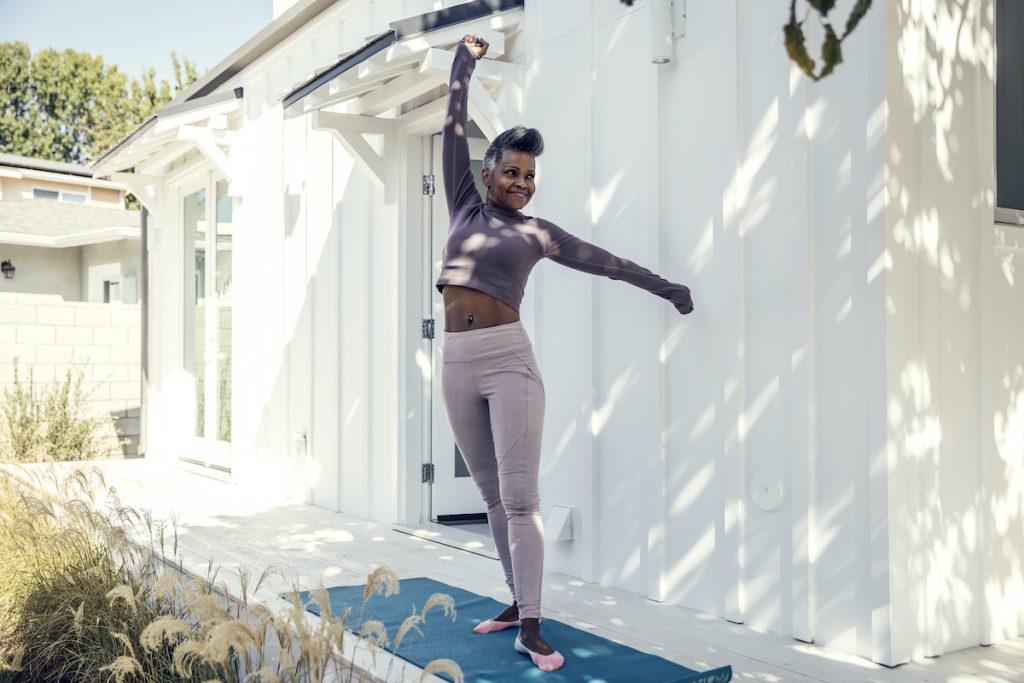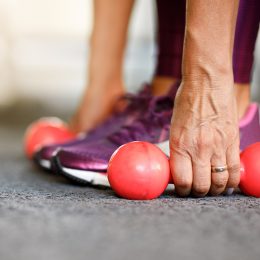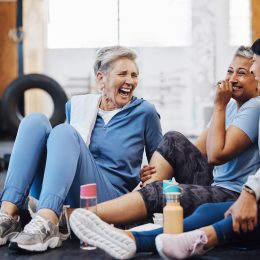5 Signs You Need to Modify an Exercise (and Will Get Better Results Because of It!)
The right exercise tweaks can relieve pain, improve your form, prevent injury, and help you get more out of every workout.

Sometimes it can feel like doing the modified version of an exercise is taking the easy route. But that’s not the case! Apart from reducing your risk of pain and injury, modifying exercises to fit your body can make the movement much more effective.
Here, trainers share five times modifying your moves can bring you closer to your goals.
1. You’re Trying Out Something New
Introducing a new exercise, movement pattern, or training style to your routine can be a great way to challenge your body and just keep things interesting. But, before you learned to run, you had to learn to walk. And that’s the smartest approach to take with your exercises, says certified personal trainer Erin Mahoney, C.P.T.
Mastering modified versions of exercises before taking on all-out ones helps ensure that you’re moving with good, level-appropriate form to make sure that you’re working the intended muscles, and not risking injury. It’s also the most effective way to progress to more advanced versions in the future — and help you rock them with similarly effective form.
The Chop is an excellent example: This exercise is a full-body move that trains the muscles in your core, back, arms, and legs to work together as you reach up and across your body, and then back down. Press play to see different ways to try it.
2. You Don’t Feel the Exercise Working in the Right Places
Each exercise has specific muscles it’s supposed to work. Think: Biceps curls target your biceps, triceps extensions target your triceps, and glute bridges target your glutes.
So, when an exercise doesn’t feel like it’s working the intended muscle, you need to make some tweaks, Mahoney says. Otherwise, you’re not going to get the benefits you want — and you might end up creating muscle imbalances or injuries over time.
After all, if you feel all your glute exercises in your hamstrings, you’re not strengthening your all-important hip muscles — and you might be overtraining the backs of your thighs.
To help zero in on the right muscles, really pay attention to what you’re doing. Consciously squeeze the one you’re trying to target or place a hand on it to help bring more awareness to the area. If things feel off, try lowering the weight and focusing on your form. You may also need to make little changes to your foot placement or knee, hip, or back position.
Play with it: Do a few reps with each little variation. When you’re working the right muscle, you’ll feel it.
3. You Can’t Move Through a Full Range of Motion
Every exercise has an intended full range of motion. During push-ups, for instance, you lower until your chest is a couple inches above the floor, then you raise up until your arms are fully straight. During shoulder presses, your hands stay in line with your ears, says Saara Haapanen, a kinesiologist with the Colorado Governor’s Council for Active and Healthy Lifestyles.
When you can’t make these things happen, it’s best to modify. “Form is what keeps us away from injury. Don’t sacrifice your form or range of motion to do a move,” says Haapanen
4. You Feel Pain or Discomfort
No pain, no gain is a lie. Pain is your body’s way of telling you that, if you keep things up, you will eventually experience injury.
“The single most important thing to do for yourself while exercising is listening to your body,” says Cherie Lamb, C.P.T., who specializes in senior fitness. “Change how you’re performing the exercise or simply find another exercise that targets the same muscles you are trying to engage. There are a million different exercises out there.”
Subscribe to our newsletter
It's quick and easy. You could be one of the 13 million people who are eligible.
Already a member? Click to discover our 15,000+ participating locations.
Follow Us
For instance, if forward lunges hurt your knees, do reverse lunges. If those don’t feel great either, try an isometric lunge, holding one position instead of moving up and down. Or maybe you do your lunges while holding onto the back of a chair for support. Check out 4 Ways to Love Lunges Again for more ideas.
If one of those lunge options doesn’t work, maybe you stick with squats. They train all of the same muscles your original forward lunges do and — if they don’t cause knee pain — they also protect your joint health over the long term.
5. You Dread the Exercise
We all have days we don’t feel like working out or a certain exercise feels harder than usual. But if you consistently find yourself dreading a given exercise, look for other options.
“Instead of dragging yourself through a workout you can’t stand, it’s better to do an activity you enjoy,” Mahoney says. “This will help you be consistent and make it a habit.”
Sometimes, it doesn’t even have to be a big exercise switch. Modifying your plank to a variation with your hands on the kitchen counter, for instance, might be all you need to do to fall in love with this core strengthener. And if you love walking, who cares if you don’t go jogging?
Take Your Favorite SilverSneakers Classes Online!
SilverSneakers members can access live fitness classes and wellness workshops through SilverSneakers LIVE. See the latest schedule and RSVP for classes here.
Not a member? If you have a Medicare Plan, it may include SilverSneakers — at no additional cost. Check your eligibility instantly here.





